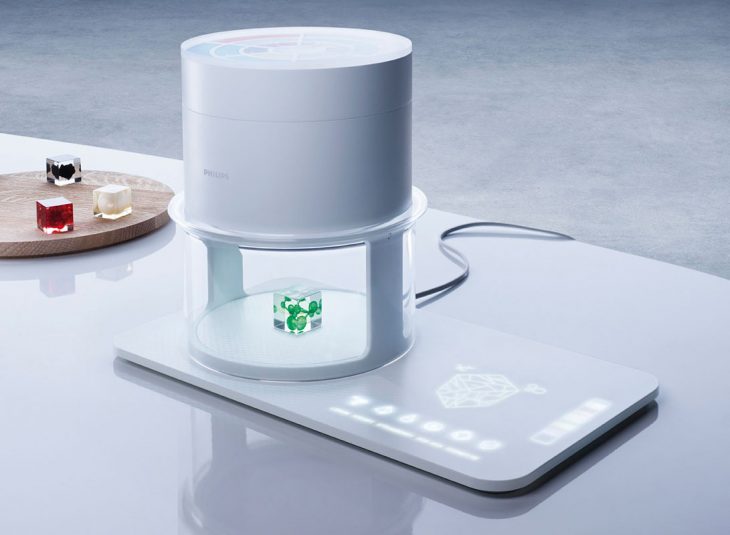‘Home Farming’ is arguably the most interesting part of this investigation, in part because it seems the least foreign, with a less-techy version already in existence. The unit is a self-contained and self-reliant food growing unit that combines hydroponics and aquaculture, otherwise known as aquaponics. Its cabinet-like shape contains room for ‘shelves’ for planting vegetable and herbs, and a bottom level for fish, making this tech-gardening device ready to fit snugly into any home and a possible replacement for its backyard version.
Aquaponics is the combination of aquaculture (fish farming) and hydroponics (soilless plant culture). In aquaponics, the nutrient-rich water that results from raising fish provides a source of natural fertilizer for the growing plants. As the plants consume the nutrients, they help to purify the water that the fish live in. A natural microbial process keeps both the fish and plants healthy and helps sustain an environment in which they both can thrive. Essentially, aquaponics is organic gardening, but without the dirt. – Aquaponics.com
While I admit that I understand little about the inner-workings of the nutrition monitor and high-tech cooking device, the idea that we could gain personalized insight into our nutritional needs is a promising prospect for achieving a healthier society, especially considering that the cooking device would be able to re-mix foods into different consistencies that could mimic a completely different type of food.
Philips Design has recognized that the re-structuring the way we grow and consume food over the next 15-20 years is a serious one, and with their Food Probe, have presented us with a three-pronged approach to food systems of the future.



